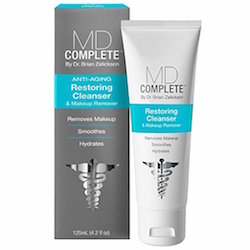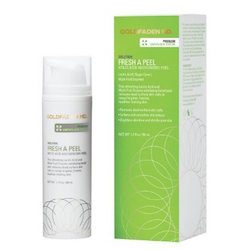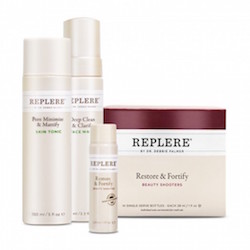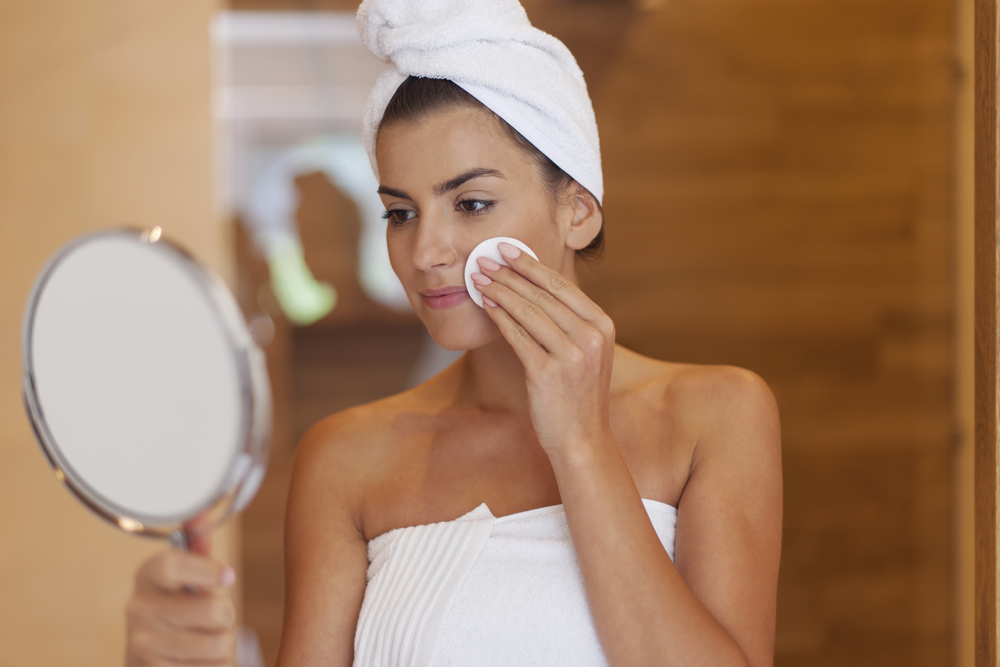If you are one of the 50 million men and women who have acne, you’ve probably gone through a staggering array of products searching for that elusive unicorn—beautiful skin.
Adult acne affects 12 to 22 percent of women and 3 percent of men at some time in their adult lives.
Clearly (or unfortunately not so clearly), acne is not just for teens.
The newest guidelines from the American Academy of Dermatology display a variety of treatments to address acne such as topical therapies, antibiotics, isotrentinoin and oral contraceptives. In fact, according to the AAD, treatment costs for the malady exceed three billion dollars a year.
To help you, dermatologists in droves are creating topical and oral products containing skin clearing ingredients, antioxidants and botanicals to help beat back this common condition. We asked three of them to weight in on what works and why.
Dr. Brian Zelickson, MD is based in Minneapolis, Minnesota, and is the creator of MD Complete, which has an acne line formulated with natural botanicals, that helps with anti-aging.
Gary Goldfaden, M.D. is a dermatologist, based in South Florida. He is also the creator of Goldfaden MD products, which includes Facial Detox, a purifying mask containing zinc oxide, sulfur and camphor to clean and heal blemish-prone skin, and reduce redness.
Dr. Debbie Palmer, Medical Director, Dermatology Associates of NY and author of Beyond Beauty, is also the Founder of Replere acne products—for both men and women—which are packed with antioxidants, such as Coffea Arabica, a topical and oral acne treatment.
Why do adults get acne?
“Acne and breakouts occur when sebum builds up in the pore, clogging it,” says Dr. Goldfaden. “Many adult women suffer from cystic acne, and hormonal acne around their periods and during the onset of peri-menopause into menopause. Men can also breakout from oils on the skin, improper hygiene and steroid use.”
Dr. Zelickson agrees. “Hormonal changes are one of the most common causes for breakouts, and they occur throughout life, not just during adolescence and not just in women.”
Is there a connection between acne and inflammation?
Dr. Palmer believes that patients with acne are under increased systemic and skin oxidative stress, that inflammation can be an acne trigger, and that antioxidant ingredients in products like hers, can help.
“Studies have shown that all forms of acne are inflammatory and antioxidants—absolutely essential ingredients in acne products— help neutralize this,” she says. “And there are additional benefits: Antioxidants are anti-bacterial, anti-fungal and anti-carcinogenic.”
“Naturally derived vitamins, botanicals and micronutrients are like vitamins for the skin,” says Dr. Zelickson. “Depending on the ingredient, they help strengthen the skin barrier, moisturize, deliver potent antioxidants, hydrate or even unclog pores, and stimulate collagen production.
What goes into a good line of adult acne products?
“Basically a good acne product line needs high quality ingredients and high concentrations of the active ingredients like salicylic acid, benzoyl peroxide and retinol,” says Dr. Zelickson. “It must also be gentle enough so it doesn’t deplete essential nutrients or dehydrate the skin, both which can cause irritation. MD Complete’s Skin Clearing line offers proven skin clearing ingredients, combined with natural botanicals. We use active ingredients like retinol, which stimulate cell turnover, smooth texture and brighten tone in both the MD Complete Anti-Aging and Acne-Clearing lines.
“A good acne line contains ingredients that are non-comedogenic, which makes it ideal for sensitive skin,” says Dr. Palmer.



What ingredients are bad for breakout-prone skin?
We know that certain ingredients are “comedogenic” especially the ones that are used in or as heavy moisturizers. A good bet is to always check the ingredients list carefully. The dermatologists had other suggestions.
“Many ingredients can cause clogged pores, allergic reactions, redness, and irritation,” says Dr. Goldfaden. “While Dimethicone (silicone) is found in many products for its ability to lubricate, it can also clog pores. The same with artificial dyes, fragrances and mineral oil.” Dr. Zelickson adds coconut oil to the list of just-say-no-to-ingredients. “It’s comedogenic and can clog pores and cause breakouts.”
What best practice skin care routine should we follow?
So should everyone use a cleanser, toner and moisturizer, the triad of beauty products we’ve been told to rely on? “We believe that toners are not necessary if a cleanser balances the skin’s Ph,” says Dr. Goldfaden. “That’s why we recommend everyone use an exfoliation product, cleanser, treatment serum, moisturizer and a suncare protection product with SPF.”
“If you are using a high quality cleanser, you don’t need a toner, and in fact, it can sometimes strip the skin of natural oils, causing it to get too dry,” Dr. Zelickson says. “However, you can add a serum to your routine for an extra blast of vitamins to the skin.”
How can I deal directly with breakouts?
“Never pick or squeeze pimples, it will irritate them even more” suggests Dr. Palmer. “Make sure to use a cleanser containing salicylic acid once a day,” says Dr. Zelickson. “It will help to clear breakouts by lifting dead skin and eliminate acne-causing bacteria.”
Dr. Goldfaden believes that the best way to deal with acne is to either treat it with oral or topical medicines and/or products.
What’s the appeal of a peel?
All the dermatologist interviewed for this article concur that light peels contribute to better, less acne-prone skin. But why is this the case? “I recommend light salicylic acid peels for those with acne prone skin,” says Dr. Palmer. “The salicylic acid exfoliates surface dead skin cells that can clog follicles and pulls oil from the skins surface and follicles, which can contribute to acne breakouts. “A light peel once a month can also help topical products to be more effective,” adds Dr. Zelickson.
“Light peels remove dead skin cells as well as surface scarring,” adds Dr. Goldfaden.
Best acne-fighting advice?
“Exfoliation can also help keep acne at bay,” says Dr. Goldfaden. “And of, course a lifestyle of healthy diet and exercise can only help.”
“Besides washing your face before bed, never sleeping in makeup and making sure your pillows are clean, I have basically one all encompassing rule,” says Dr. Zelickman. “Take care of yourself —eat and sleep well and use good sun protection—and your skin will take care of you.”
That’s one piece of advice that thankfully you don’t need a prescription for.
7 Myths About Adult Acne
1. If you didn’t have acne as a teen you won’t get it as an adult.
Fact: Even if you never had a pimple before, you can develop acne later in life. It is common among women going through menopause. Fluctuating hormones and environmental factors, such as stress, affect how the skin behaves.
2. Blackheads are just dirt on your face.
Fact: If your skin cells don’t turnover fast enough, your pores get clogged with oil and sebum, but that’s not dirt.
3. You can’t eat chocolate if you suffer from acne
Fact: Foods with high glycemic indexes (pasta, breads, sugary sweets) and refined carbs cause a spike in insulin levels which results in increased sebum production and blocked pores that become inflamed or infected. The issue isn’t the chocolate it’s the sugar and dairy that is added. To solve: eat dark chocolate with a high cocoa content (70 percent or higher).
4. Wearing sunscreen on your face creates acne.
Fact: Though chemical sunscreens, which absorb UV light (look for oxybenzone and avobenzone in the ingredients list) can be irritating, physical sunscreens (think zinc oxide) can help kill the bacteria that causes acne.
5. There is no relationship between stress and acne.
Fact: When we are stressed our body produces androgens-hormones that stimulate the oil glands and hair follicles, which can lead to acne.
6. Toothpaste can be used to heal a pimple.
Fact: The ingredients in toothpaste, which can include hydrogen peroxide, alcohol, baking soda and triclosan can dry pimples out, but can also cause irritation. Best to stick with dermatologist-approved remedies.
7. Laying out in the sun will dry up your acne.
Fact: Although you may feel the inflammation-reducing benefits of sun exposure, over time your skin will suffer as the sun breaks down the collagen in your skin, which keeps it elastic. With less support, your pores will be more open, and likely to get clogged. Plus it’s common sense to avoid ultraviolet light as much as possible.










